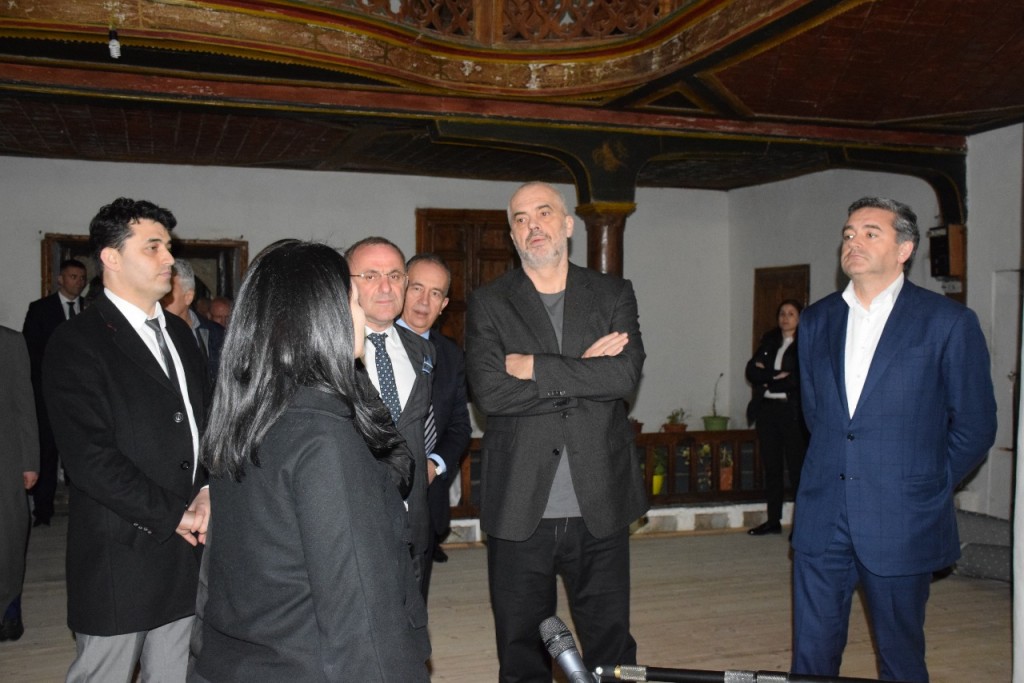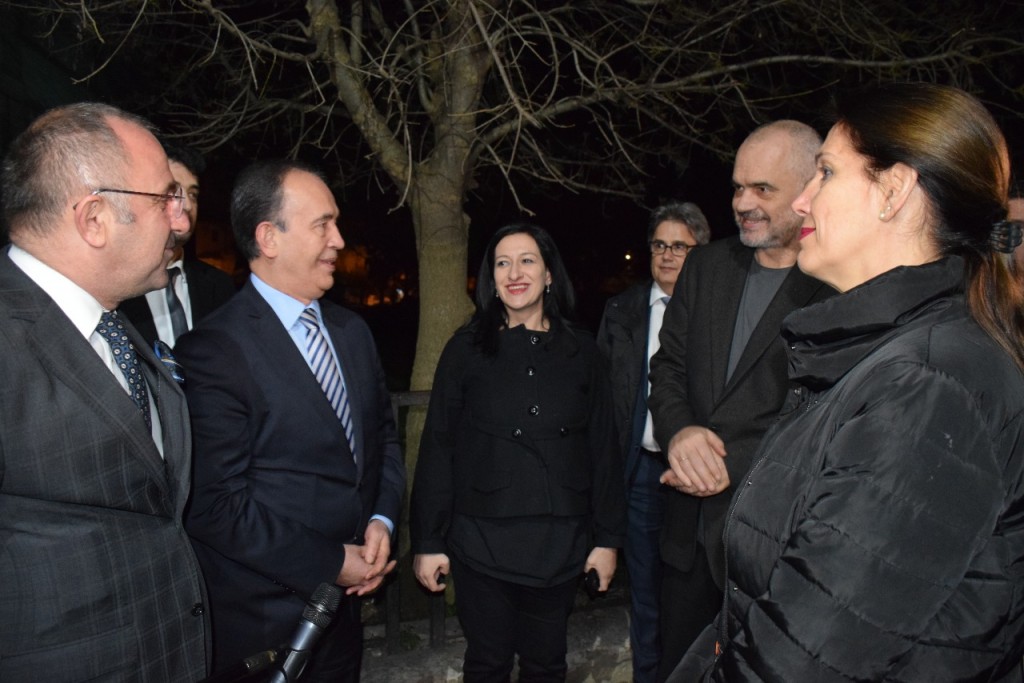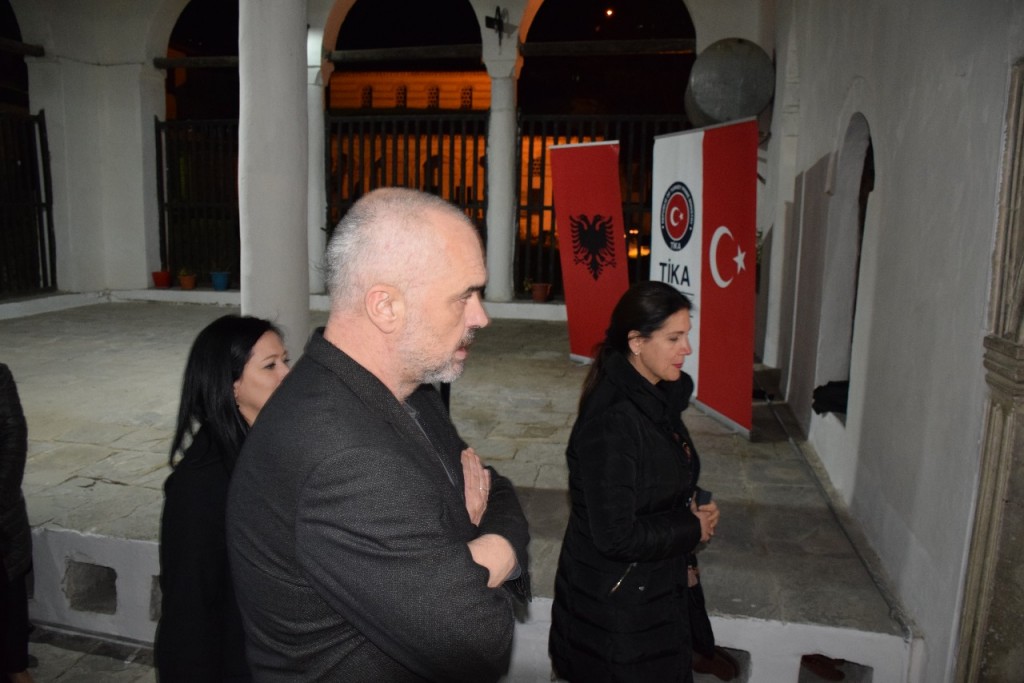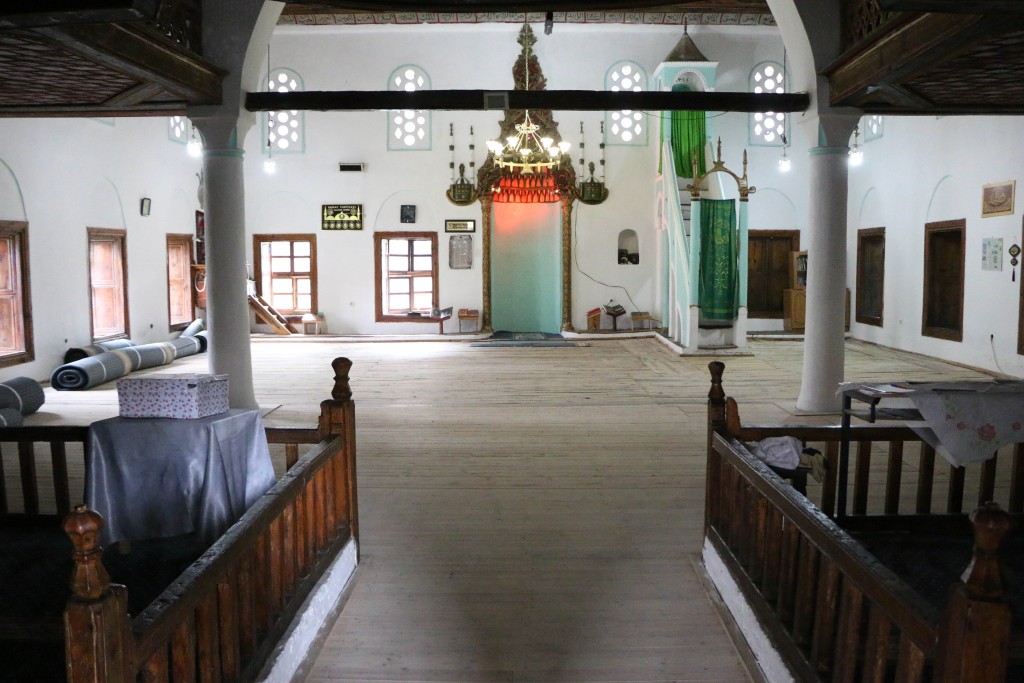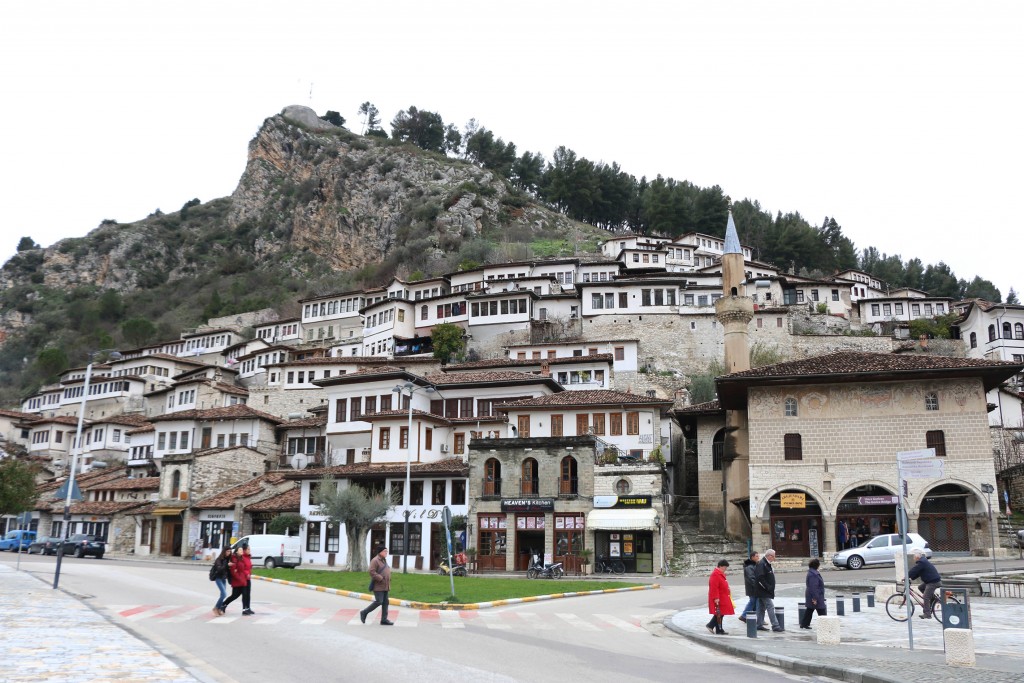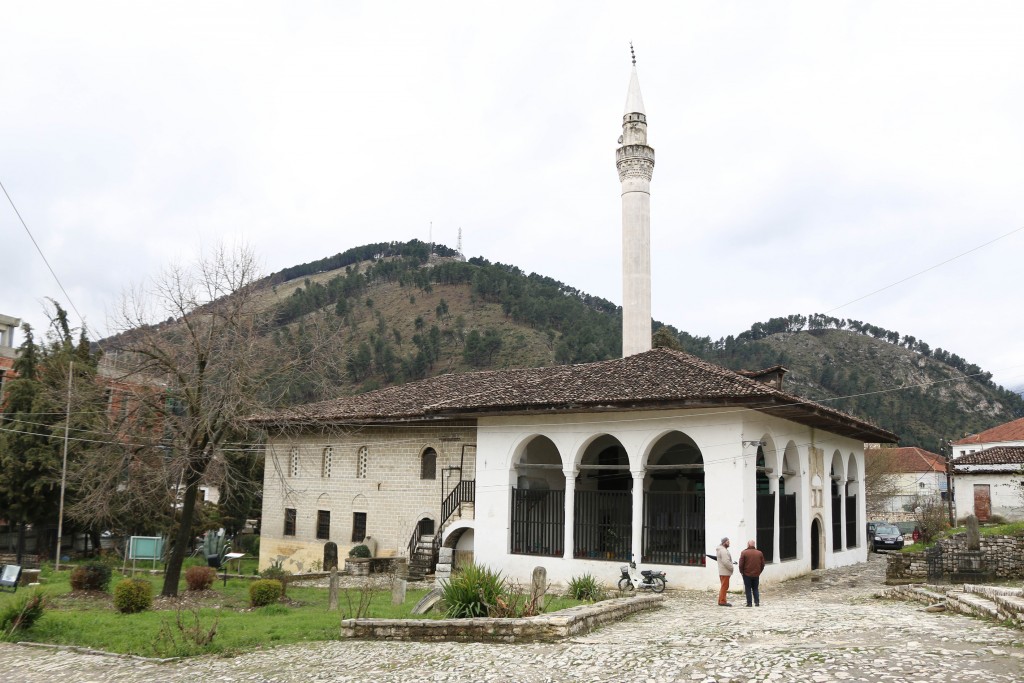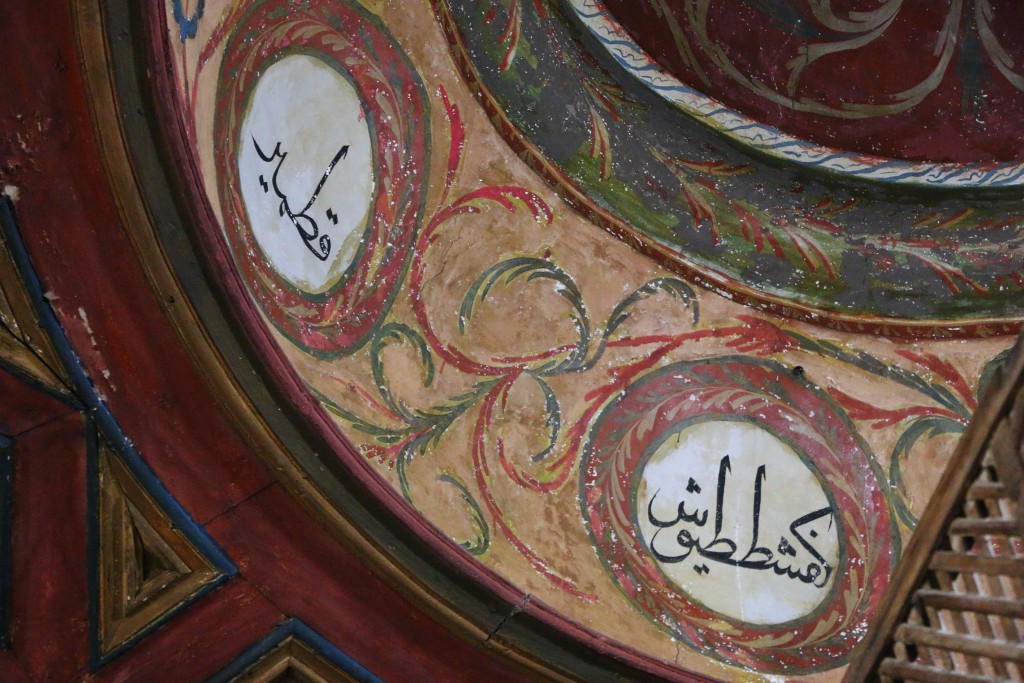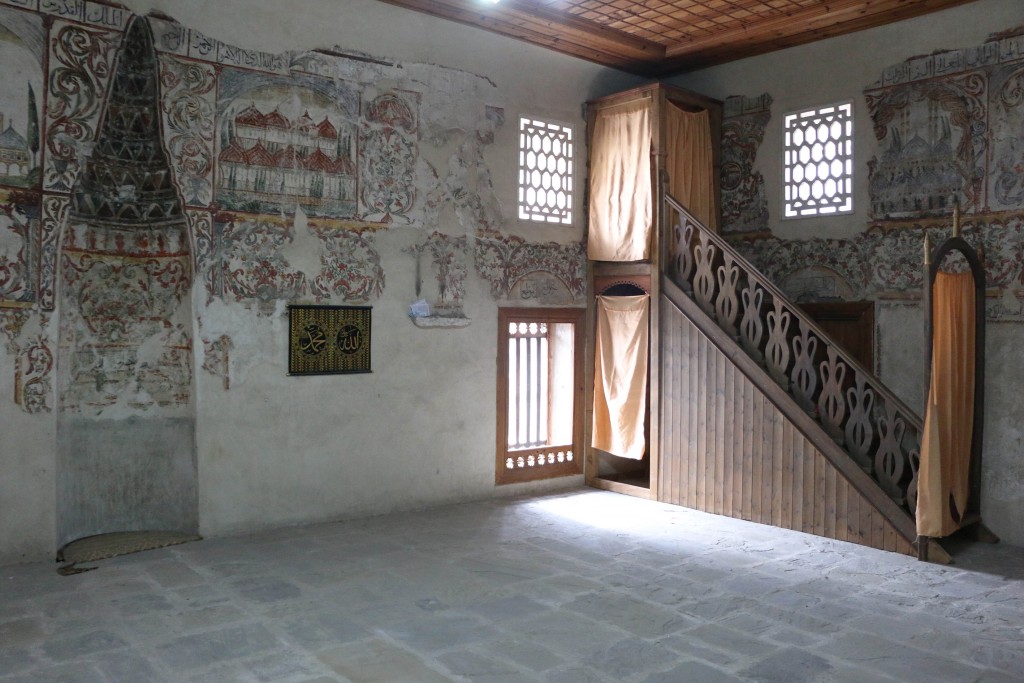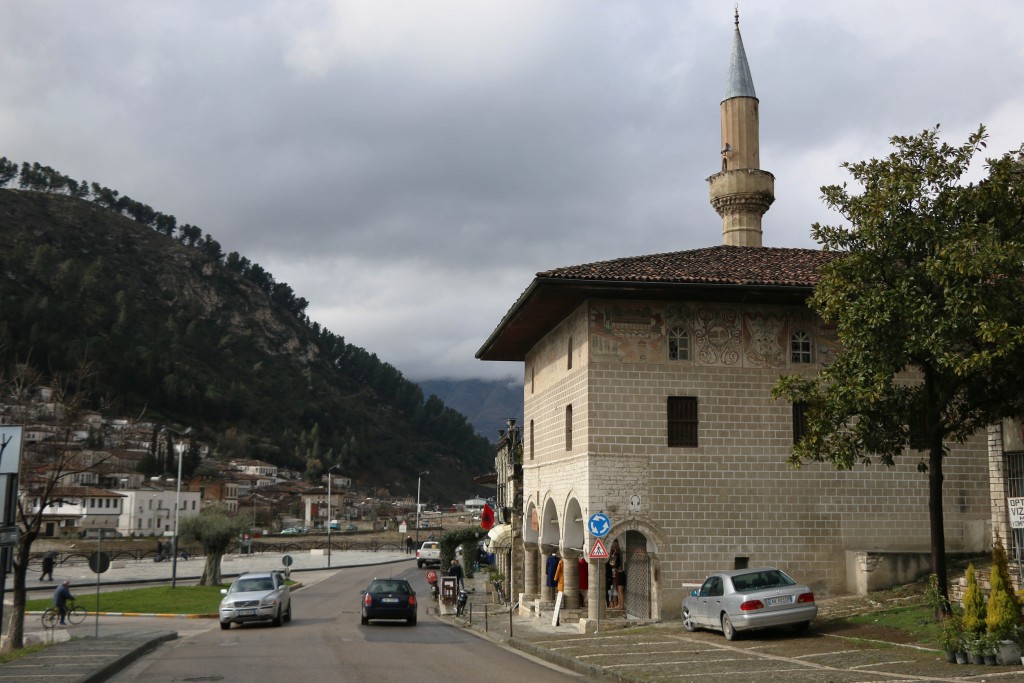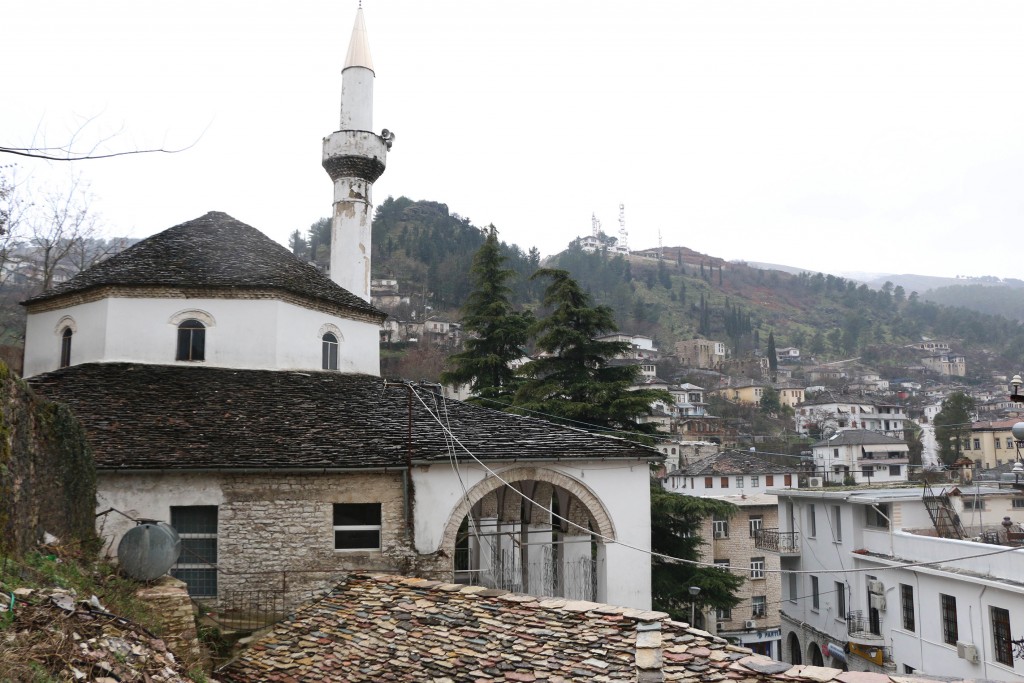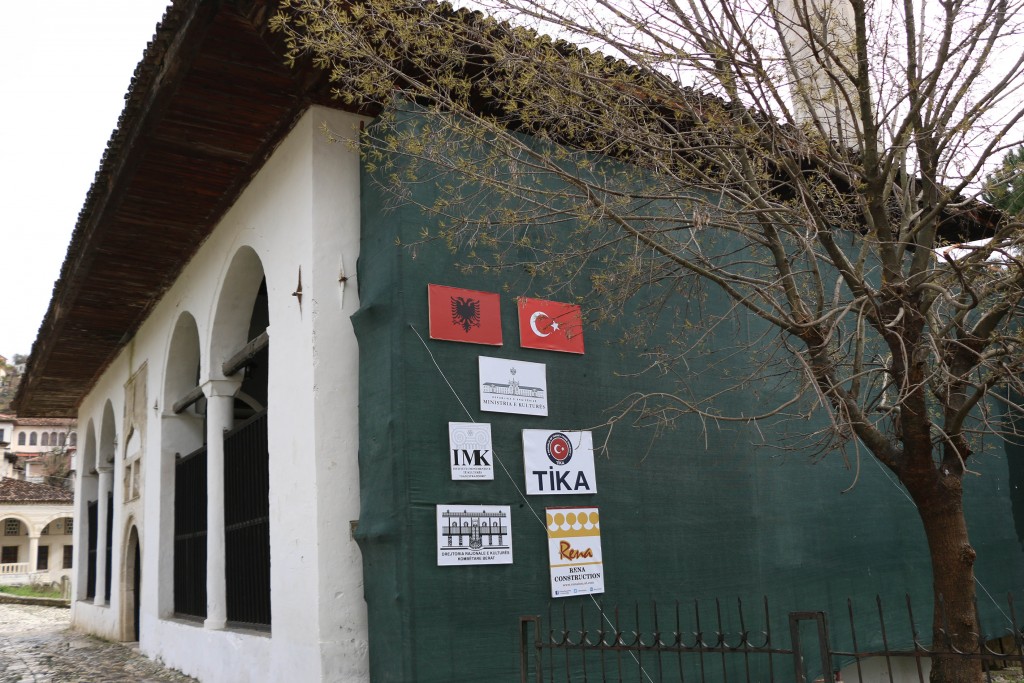News
23 March 2018Albanian Prime Minister Edi Rama Inspected TİKA’s Restoration Projects in Berat
Albanian Prime Minister Edi Rama and the Cabinet members accompanying him visited the restoration efforts started by TİKA in Albania’s city of Berat.
In 2018, in order to protect, look after and sustain the shared historical and cultural heritage assets across Albania, and to pass them on to the next generations, TİKA started the restoration work on Tirana Et'hem Bey Mosque, Gjirokastër Bazaar Mosque, Berat Sultan’s Mosque and Halveti Teqe, and Berat Bachelors' Mosque.
Prime Minister Edi RAMA is grateful for TİKA’s activities
Albanian Prime Minister Edi Rama and the Cabinet members and Albanian member of the parliament accompanying him visited the locations of Berat Sultan’s Mosque and Halveti Teqe, and Berat Bachelors' Mosque restoration projects, which were started by TİKA in Berat, to see the restoration efforts on site and to carry out inspections. He was briefed by Albanian Minister of Culture Mirala Kumbaro and TİKA Tirana Coordinator Necip Özay Özütok, and he expressed his gratitude for TİKA’s projects and restoration efforts in Albania.
Previously, TİKA meticulously completed the restorations of Preze Castle Mosque, Kruja Murad Bey Mosque, Korçe Iljaz Mirahori Mosque and Berat Lead Mosque. In 2017, Ottoman Clock Tower, which was built as a part of the Gjirokastër Fortress for the calculation of prayer times during the Ottoman era, was restored in a short time by TİKA.
The works left by our ancestors, where TİKA has simultaneously started the restoration efforts
Tirana-Et'hem Bey Mosque
During the Ottoman period, the construction began in Tirana in 1793 by Molla Bey and it was completed in 1821 bu Molla Bey’s son Et’hem Bey. Restorations were carried out in 1870 and 1985 but the mosque was closed to worship in 1966 and transformed into a museum. In 1991, it was reopened to worship as a mosque.
It was built upon a rectangular base, with a single minaret, single dome and a wooden portico. The mosque covers an area of 310 sq meters. Between round and engraved columns, there are 15 arches. The worship area of the mosque is in the shape of a cube. Inside, the minbar is on the right and the mihrab is on the left. The octagonal dome covers the whole ceiling. The wall and the interior of the dome was embellished with flower and religious motifs in the form of miniature painting technique. These embellishments are unique examples of a blend of Islamic local oriental, baroque and primarily Ottoman art forms.
Gjirokastër-Bazaar Mosque
Gjirokastër (Ergiri) is one of the exceptional cities in the Balkans that still embody the architectural features of the Ottoman period. Gjirokastër Bazaar Mosque was built between 1754-1755 and underwent many changes until today. In 1967, it was closed to worship and used as a warehouse and acrobatics training area. In 1991, once the regime changed, it was reopened to worship.
The mosque is in the shape of a square and the dome is built on top of an octagonal drum. The roof of the main dome is covered with stone. To its right, there is a mausoleum with an octagonal stone covered roof. In its construction, refined white and gray colored limestones were used. Its architecture is in harmony with the shops in the bazaar.
Berat-Sultan’s Mosque and Halveti Teqe
The mosque was built by an edict of the sultan during Bayezid II’s Albanian campaign in 1492, as he was traveling to Vlora on Ohrid-Elbasan road. Painted wooden panels were used in the ceiling cladding of harem and women’s platform sections. In both ceilings, hand drawn friezes circumvent with the 99 names of Allah. At the center of the ceilings, the domes contain wooden carvings and hand drawn verses from Quran.
Halveti Teqe was built between 1781-1782 by Ahmet Kurt Pasha for Sheik Hasan and Khalwati order. Built from stone material using masonry construction, the lodge consists of whirling hall, mausoleum and final order location. The whirling hall’s roof was constructed from wood. It was covered with Alaturca tiles and on the inside, the ceiling was covered with painted wooden panels.
Berat-Bachelors' Mosque
As told in the epitaph above the entrance, Bachelors’ Mosque was built by Ibrahim Pasha Vlora’s son Sulejman Pasha Vlora between 1827-1828. Wall paintings in the frieze technique on the inner and outer walls of the mosque are usually located in medallions, panels, belts or frames. The subjects of the wall paintings are mostly still-life, scenery and urban depictions.
